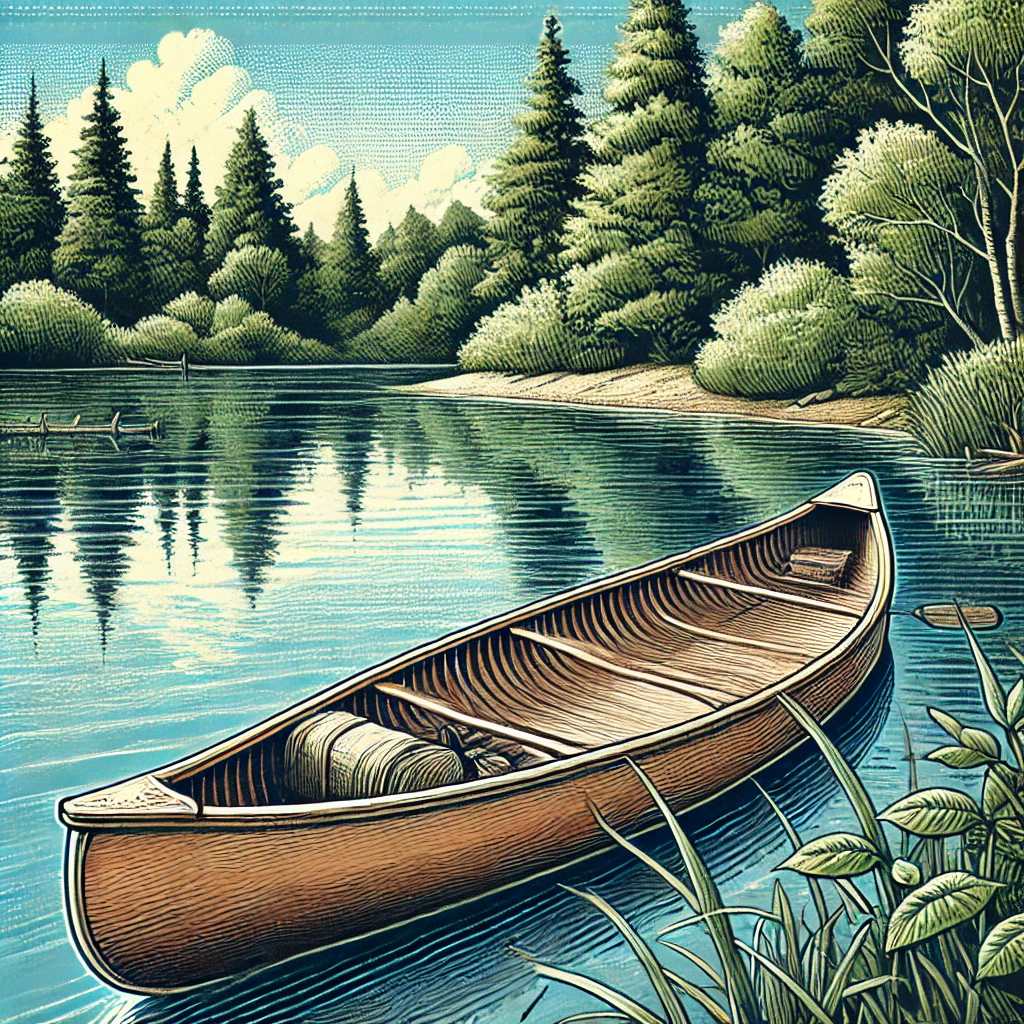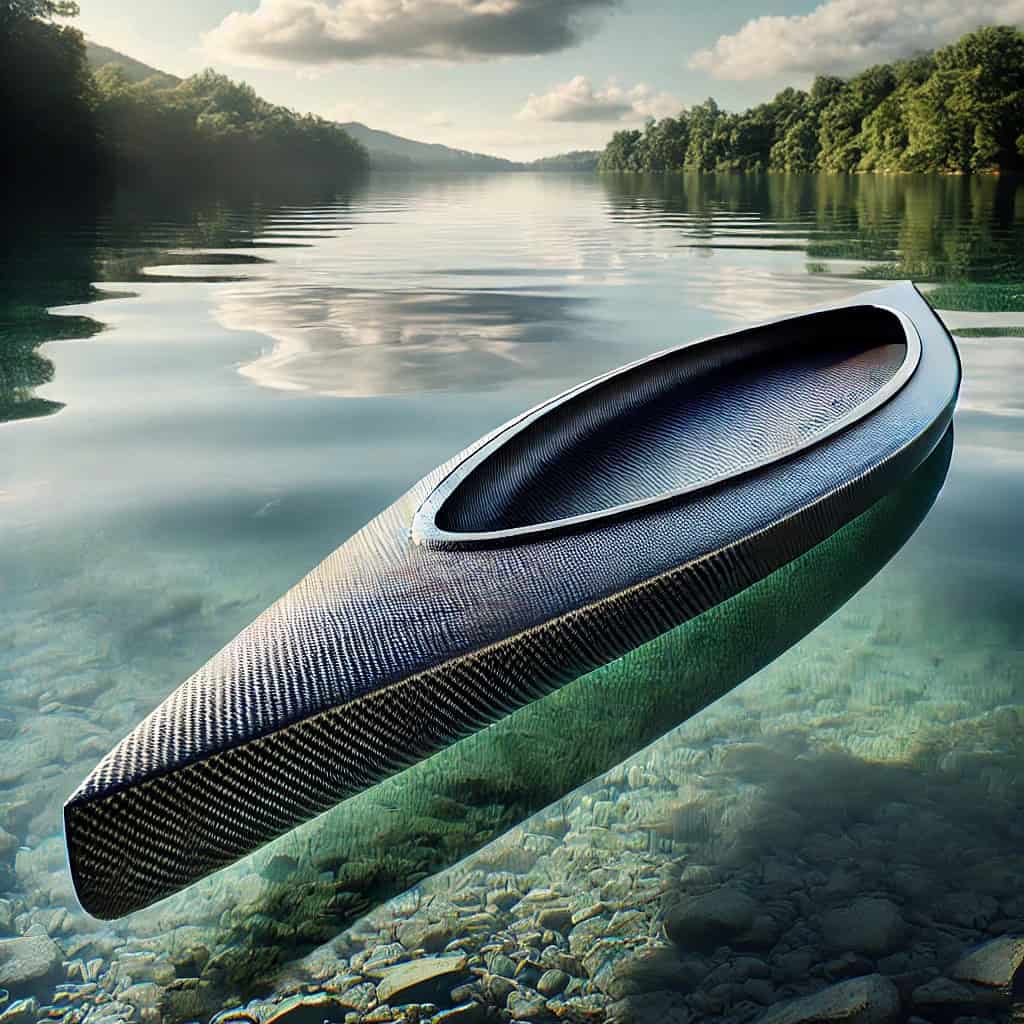Fishing Canoes Demystified: Techniques for Better Catches
Fishing canoes have been a staple in the angling community for centuries, offering a versatile and accessible way to fish in various water bodies.
From calm lakes to slow-moving rivers, fishing canoes provide a unique blend of simplicity, mobility, and stealth, making them a popular choice among anglers of all skill levels.
In this guide, we will explore what fishing canoes are, the benefits of using them, the materials they are made from, and tips for choosing the perfect fishing canoe for your needs.
What are Fishing Canoes?

A fishing canoe is a type of small, narrow watercraft designed specifically for fishing.
It is typically powered by paddles, allowing the angler to maneuver quietly and efficiently in the water.
Fishing canoes come in various shapes and sizes, each tailored to different fishing environments and techniques.
They are known for their stability, lightweight construction, and capacity to carry fishing gear and supplies.
Fishing canoes differ from recreational canoes in that they often feature specialized accessories and modifications, such as rod holders, tackle storage, anchor systems, and more.
These enhancements are designed to make fishing from a canoe more comfortable and efficient.
Benefits of Using a Fishing Canoe
Fishing canoes offer numerous advantages that make them an attractive option for anglers.
Here are some key benefits:
1. Accessibility: Fishing canoes are lightweight and easy to transport, making them accessible to a wide range of anglers. Whether you have a small car, a truck, or a trailer, a fishing canoe can be easily loaded and launched, allowing you to explore remote fishing spots that are otherwise inaccessible by larger boats.
2. Stealth and Quietness: Canoes are known for their quiet operation, which is a significant advantage when fishing in shallow or clear waters where fish can be easily spooked. The ability to approach fish stealthily can increase your chances of a successful catch, especially when targeting species that are sensitive to noise and movement.
3. Versatility: Fishing canoes are versatile and can be used in various water conditions, from calm lakes to slow-moving rivers and even coastal waters. Their design allows for easy maneuvering in tight spaces, making them ideal for fishing around structures like docks, fallen trees, and lily pads.
4. Affordability: Compared to motorized boats, fishing canoes are relatively affordable. They have lower maintenance costs and do not require fuel, making them an economical choice for anglers who want to enjoy the sport without breaking the bank.
5. Physical Exercise: Paddling a fishing canoe provides a great workout, engaging the upper body, core, and cardiovascular system. It offers a way to enjoy the outdoors while staying active and healthy.
Materials Used in Fishing Canoes
Fishing canoes are made from various materials, each offering unique advantages and characteristics.
The choice of material can significantly impact the canoe’s performance, durability, weight, and price.
Here are the most common materials used in fishing canoes:
1. Aluminum: Aluminum canoes are known for their durability and lightweight construction. They are resistant to impacts and abrasions, making them a good choice for fishing in rocky or shallow waters. Aluminum canoes are also relatively low-maintenance and do not require frequent repairs. However, they can be noisy in the water, which may spook fish, and they can become hot in direct sunlight.
2. Fiberglass: Fiberglass canoes are lightweight and offer excellent performance in terms of speed and maneuverability. They are smooth on the water and provide a quieter experience compared to aluminum canoes. Fiberglass canoes are also resistant to UV rays and corrosion, making them suitable for use in saltwater environments. However, they can be more expensive and may require more care to avoid damage from impacts.
3. Polyethylene: Polyethylene canoes are made from a type of plastic that is highly durable and resistant to impacts. They are often rotomolded, which means they are constructed in a single piece, making them virtually indestructible. Polyethylene canoes are affordable and require minimal maintenance, making them a popular choice for beginners. However, they can be heavier than other materials and may not offer the same level of performance in terms of speed and maneuverability.
4. Kevlar: Kevlar canoes are known for their lightweight and high-strength properties. They are often used in high-performance canoes designed for speed and efficiency. Kevlar is more expensive than other materials but offers a superior strength-to-weight ratio, making these canoes easy to transport and handle. Kevlar canoes are also resistant to UV rays and chemicals, making them suitable for various water conditions.
5. Wood: Wooden canoes are classic and beautiful, often handcrafted with attention to detail. They offer a traditional aesthetic and can be customized with various finishes and designs. Wooden canoes are relatively lightweight and provide a quiet ride on the water. However, they require more maintenance to protect against water damage, rot, and UV rays. Wooden canoes are also more expensive and less common than other materials.

Choosing the Right Fishing Canoe
Selecting the right fishing canoe involves considering various factors, including the type of water you plan to fish in, the fish species you target, and your personal preferences.
Here are some key considerations:
1. Canoe Size and Weight: The size and weight of the canoe will impact its performance and ease of use. Larger canoes offer more stability and storage space, making them ideal for carrying multiple passengers and gear. However, they can be more challenging to transport and maneuver. Smaller canoes are more portable and easier to handle but may have limited space for gear and supplies.
2. Stability and Capacity: Stability is crucial when fishing from a canoe, as it affects your ability to stand and move around without tipping. Canoes with a wider beam (width) offer better stability, making them suitable for activities like fly fishing or standing while casting. Additionally, consider the canoe’s weight capacity to ensure it can accommodate you, your gear, and any additional passengers.
3. Hull Design: The hull design of a canoe influences its performance in the water.
There are three main types of hull designs:
- Flat Hull: Offers excellent stability and is ideal for calm waters. It is suitable for beginners and activities that require standing.
- Round Hull: Provides better speed and maneuverability but may sacrifice stability. It is suitable for experienced paddlers and faster water conditions.
- V-Shaped Hull: Offers a balance between stability and speed. It is versatile and performs well in various water conditions.
4. Seating and Comfort: Consider the seating arrangements and comfort features of the canoe. Some canoes have bench seats, while others have molded seats with backrests. Look for features like adjustable seats, padded cushions, and foot braces for added comfort during long fishing trips.
5. Fishing Accessories and Features: Many fishing canoes come equipped with specialized features to enhance the angling experience. These may include built-in rod holders, tackle storage compartments, anchor systems, and mounting points for fish finders and other electronics. Consider the type of fishing you plan to do and choose a canoe with the necessary accessories.
6. Portability and Storage: Portability is an essential factor, especially if you plan to transport the canoe on your own. Consider the weight and length of the canoe, as well as how easy it is to load and unload. Some canoes come with handles or carrying yokes for easier transport. Additionally, think about where you will store the canoe when not in use.
Tips for Fishing from a Canoe
Fishing from a canoe requires a combination of paddling and angling skills.
Here are some tips to help you get the most out of your fishing canoe experience:
1. Practice Paddling: Before heading out for a fishing trip, practice paddling and maneuvering your canoe in calm waters. Familiarize yourself with basic paddling strokes, such as the forward stroke, backward stroke, and J-stroke. These skills will help you navigate and position your canoe while fishing.
2. Pack Light and Organized: Space is limited on a canoe, so pack only the essentials. Organize your gear in waterproof bags or containers to keep it dry and easily accessible. Secure any loose items to prevent them from shifting or falling overboard.
3. Use a Canoe Anchor: An anchor is a valuable tool for keeping your canoe stationary while fishing. Use a small, lightweight anchor suitable for your canoe’s size and weight. When anchoring, drop the anchor in a position that allows you to fish comfortably without the canoe drifting.
4. Stay Low and Centered: Maintaining a low center of gravity is crucial for stability when fishing from a canoe. Avoid standing up unless your canoe is designed for standing fishing. Keep your movements slow and deliberate to prevent tipping.
5. Be Weather Aware: Check the weather forecast before heading out on the water. Be aware of changing weather conditions, especially wind and waves, which can affect your canoe’s stability. Always wear a personal flotation device (PFD) and carry safety gear, such as a whistle and first aid kit.
Embrace the Adventure of Fishing Canoes
Fishing canoes open up a world of exciting possibilities for anglers seeking a unique outdoor experience.
These versatile watercraft offer an unparalleled blend of affordability, accessibility, and connection with nature.
From serene lakes to meandering rivers and coastal waters, fishing canoes can transport you to prime angling spots while immersing you in tranquil surroundings.
By familiarizing yourself with various canoe types, materials, and key features, you’ll be well-equipped to select the ideal fishing canoe for your needs.
As you embark on your canoeing journey, remember to:
- Prioritize safety at all times
- Hone your paddling techniques
- Respect local regulations and the environment
With the right fishing canoe at your disposal, you’ll discover a new dimension to your angling pursuits.
Experience the rush of reeling in a catch, marvel at the beauty of untouched waterways, and bask in the serenity of nature.
It’s time to take the plunge into the world of fishing canoes and means go gather your gear, grab your paddle, and set out on an unforgettable fishing adventure.
May your voyages be filled with exciting catches and peaceful moments on the water.
Happy paddling and tight lines!

